Impetigo
- Impetigo is a common superficial bacterial skin infection
- Most commonly seen in children ages 2-5, but older children and adults can be affected
- Impetigo is contagious, easily spread among individuals in close contact
- Most cases are due to S. aureus with the remainder either being due S. pyogenes or a combination of these two organisms
Clinical Variants
- The three clinical variants
- Non-bullous impetigo
- Bullous impetigo
- Ecthyma
1. Non-bullous Impetigo (contagiosum)
- Also called impetigo contagiosum
- Lesions begin as papules surrounded by erythema
- They progress to form pustules that enlarge and break down to form thick, adherent crusts with a characteristic golden appearance
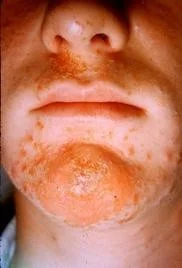
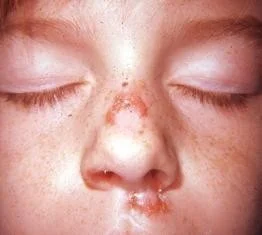

2. Bullous Impetigo
- A form of impetigo seen in young children is characterized by flaccid bullae with clear yellow fluid, which later becomes purulent.
- Ruptured bullae leave a thick brown crust
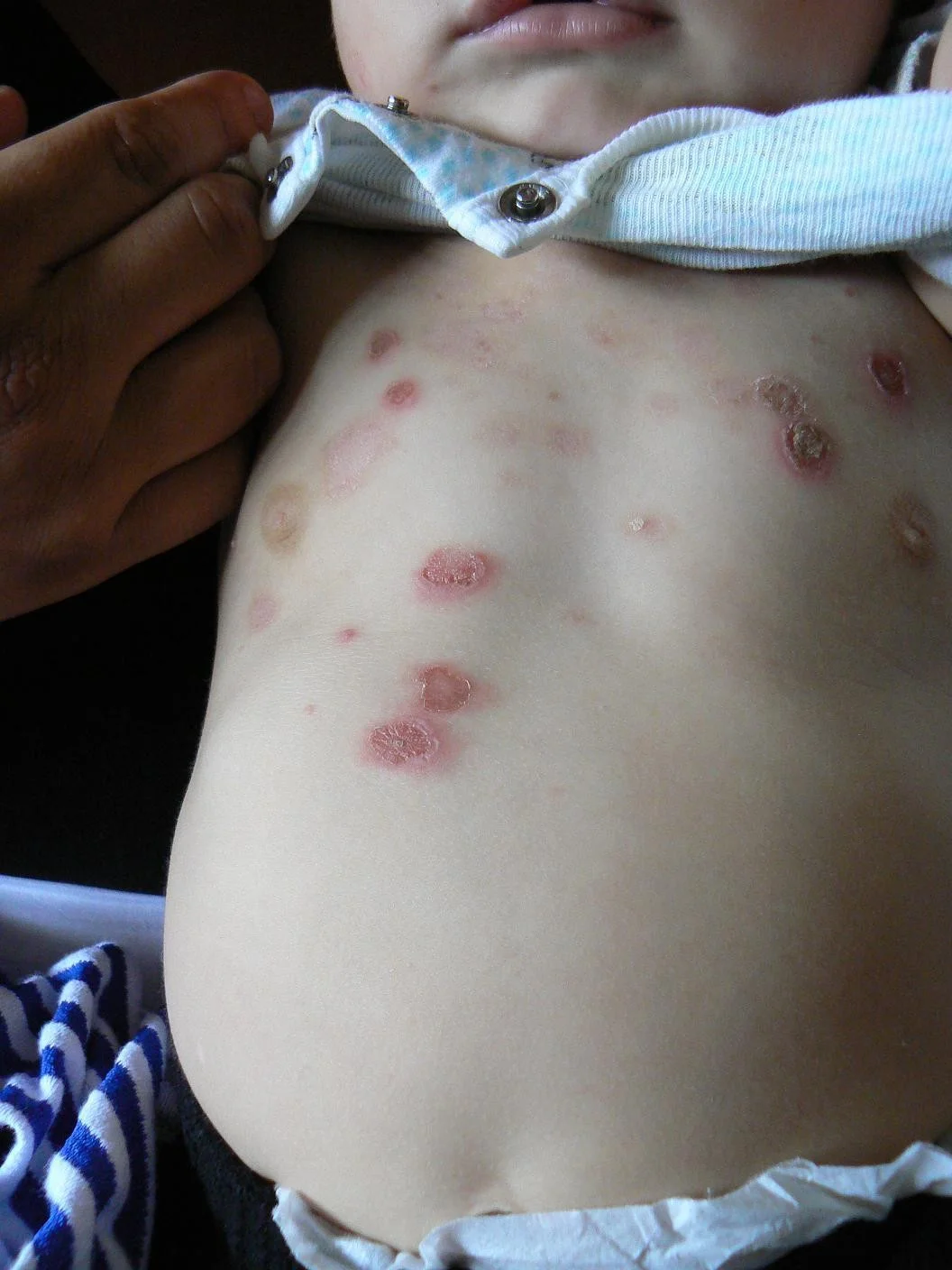
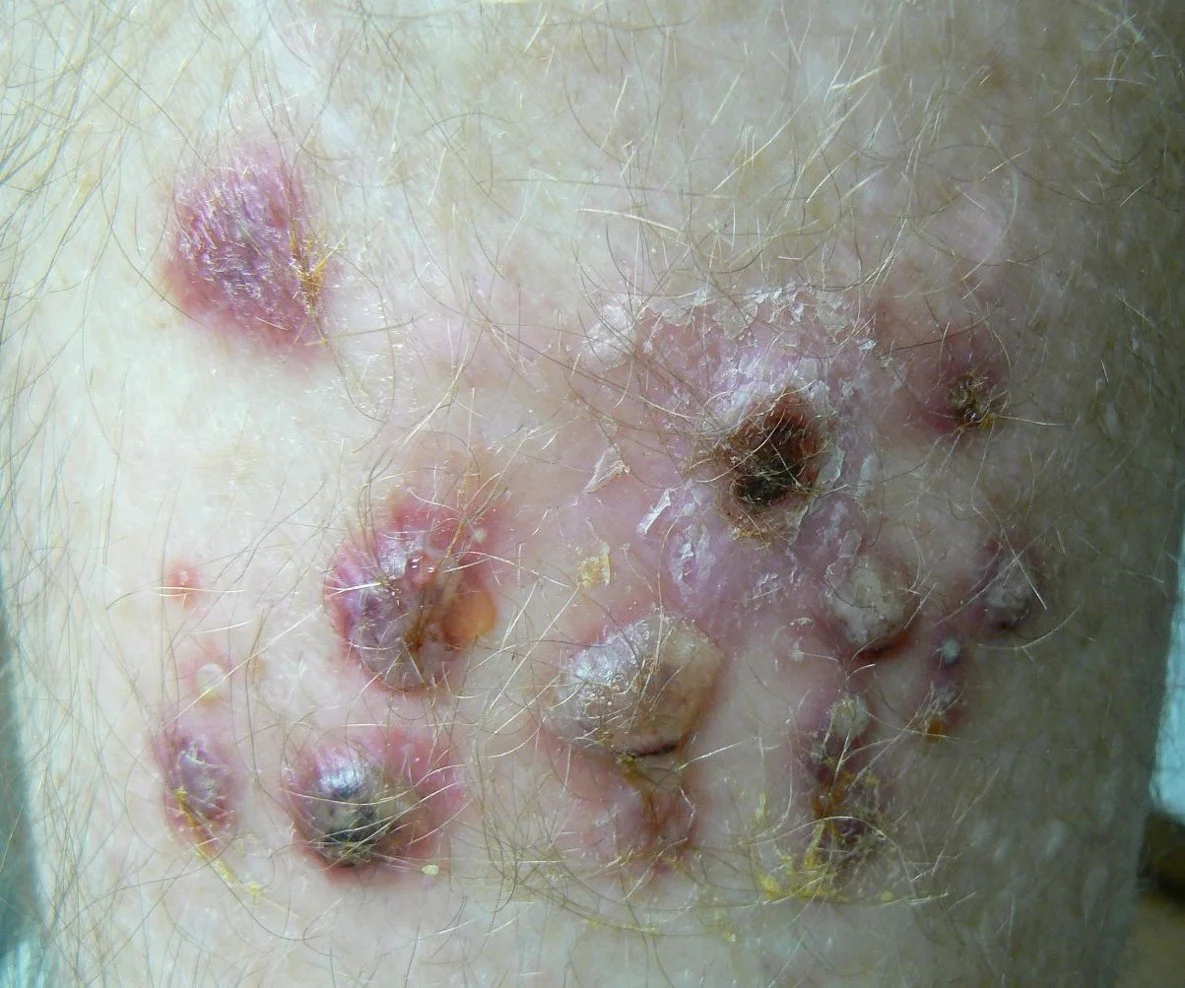
3. Ecthyma (deep impetigo)
- Ecthyma is an ulcerative form of impetigo in which the lesions extend through the epidermis and deep into the dermis.
- They consist of “punched out” ulcers covered with yellow crust surrounded by raised margins.
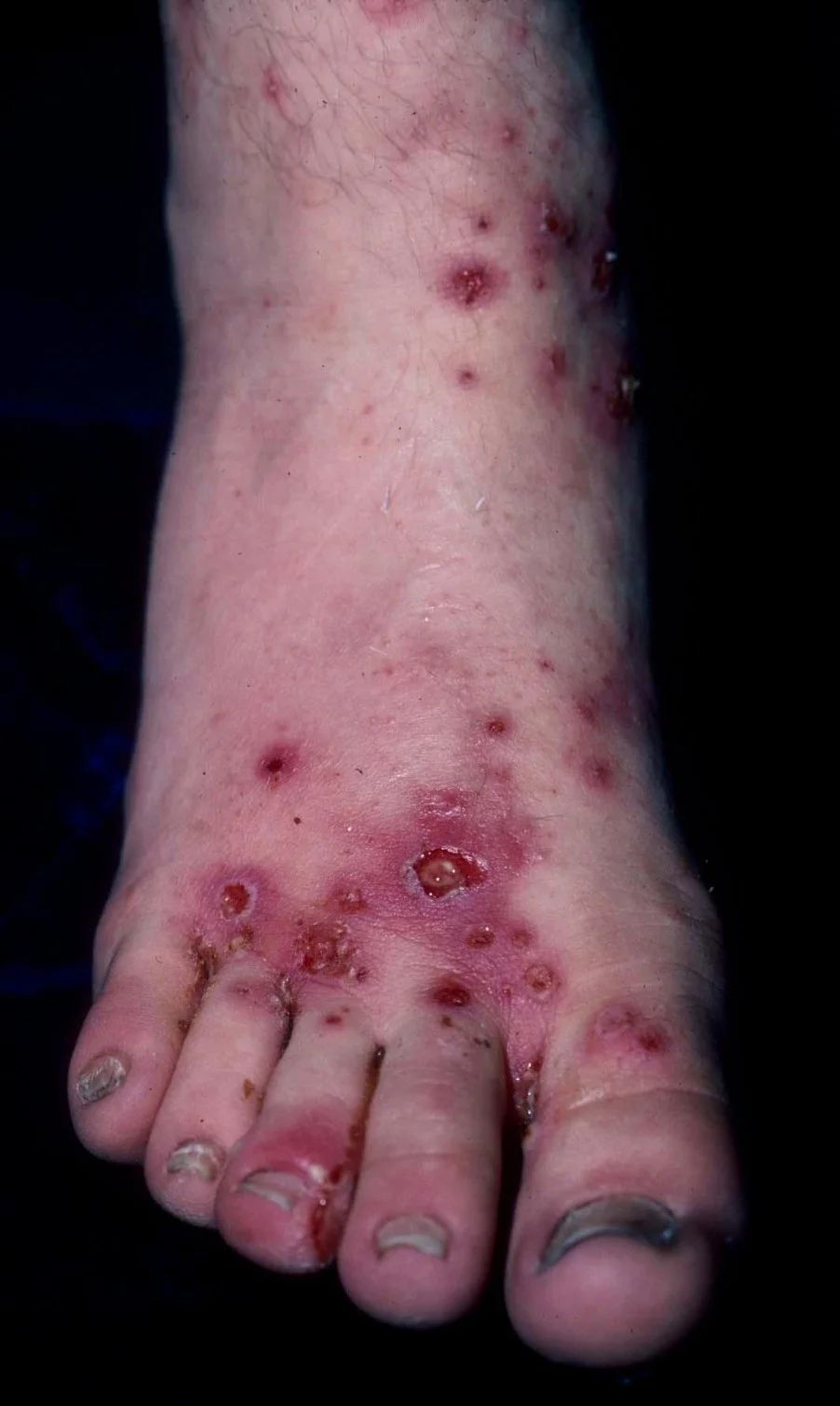
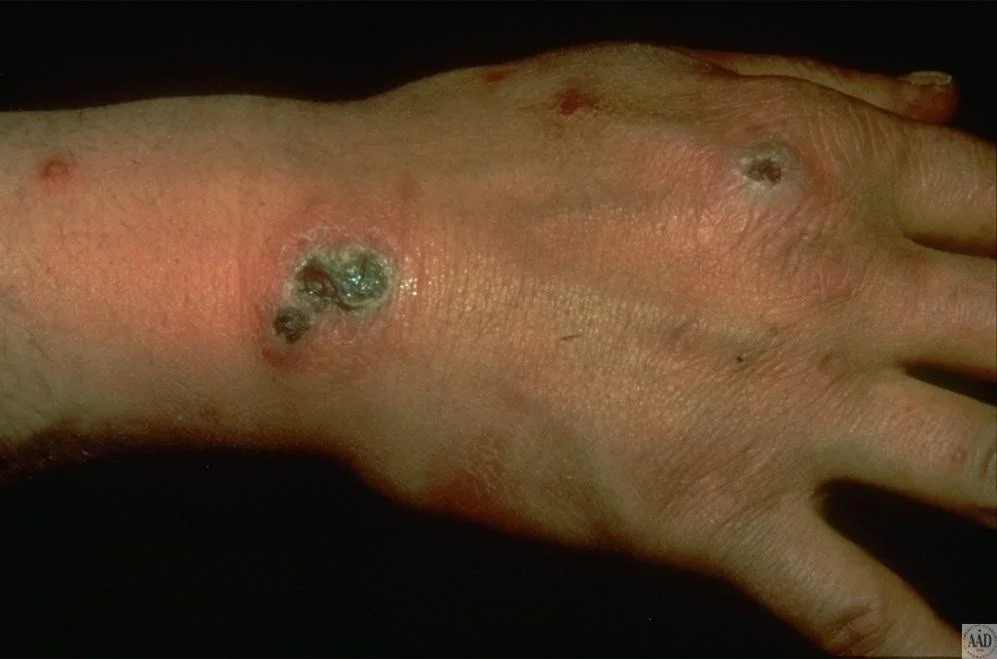
Treatment
-
Topical therapy with mupirocin ointment may be equally effective to oral antibiotics if the lesions are localized in an otherwise healthy patient
-
Oral antibiotics used to treat impetigo include:
- Dicloxacillin
- Cephalexin
- Erythromycin
Case Five
History
- Mr. H is a 17-year-old man who presents to his primary care provider with a three-week history of a facial rash. The rash is not painful, but occasionally burns and itches.
- He tried over the counter hydrocortisone cream with no relief.
Skin Exam
- Peri-oral papules and plaques with overlying honey-colored crust
- Minimal surrounding erythema
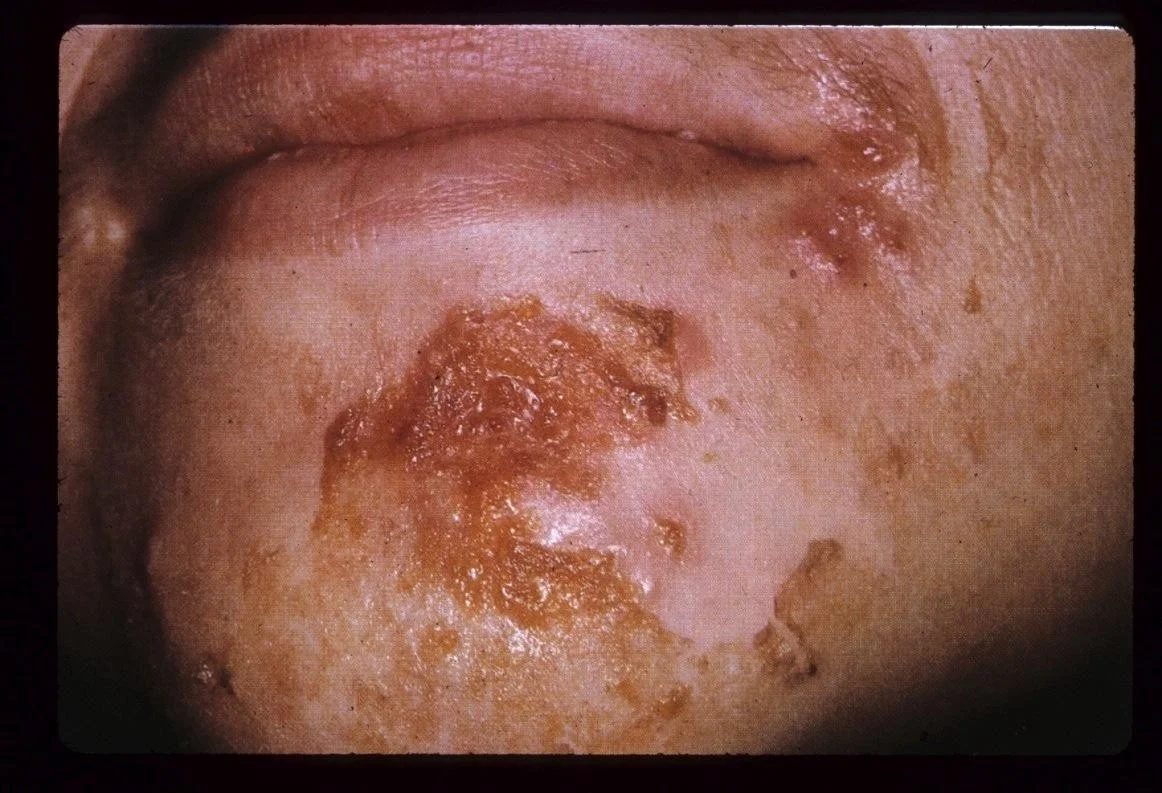 Mr H was diagnosed with non-bullous impetigo based on clinical findings
Mr H was diagnosed with non-bullous impetigo based on clinical findings
Question 1
- What is the most likely diagnosis? a. Acne vulgaris b. Impetigo c. Orolabial HSV d. Seborrheic dermatitis
Case Five, Question 1 - Answer
Answer: b
- What is the most likely diagnosis? a. Acne vulgaris (would expect comedones and pustules, but not crusted plaques) b. Impetigo c. Orolabial HSV (would expect grouped and confluent vesicles with an erythematous rim; can evolve to crusting and easily be confused with impetigo) d. Seborrheic dermatitis (would expect erythematous patches and plaques with a greasy, yellow scale)
Case Five, Question 2
- Which of the following treatment recommendations is most appropriate for him? a. Hand washing to reduce spread b. Topical or oral antibiotics c. Wash the affected area with antibacterial soap d. All of the above
Case Five, Question 2 - Answer
Answer: d
- Which of the following treatment recommendations is most appropriate for Danny? a. Hand washing to reduce spread b. Topical or oral antibiotics c. Wash the affected area with antibacterial soap d. All of the above
Impetigo: Treatment
- Oral antibiotics used to treat impetigo include:
- Dicloxacillin
- Cephalexin
- Erythromycin (some strains of Staphylococcus aureus and Streptococcal pyogenes may be resistant)
- Clindamycin
- Amoxicillin/clavulanate
Impetigo: Treatment (cont.)
- Dosing guidelines will vary according to age
- Topical therapy with mupirocin ointment may be equally effective to oral antibiotics if the lesions are localized in an otherwise healthy patient
Impetigo
- Caused by staphylococci streptococci or by both together.
- the bullous type is usually caused by Staphylococcus aureus because exfoliative toxins produced by S. aureus cleave the cell adhesion molecule.
- the crusted ulcerated type is caused by streptococci.
Presentation
- A thin-walled clear blister forms before rupturing to leave area of exudation and yellowish crusting
- lesions enlarge and become contiguous with the others
- often multiple particularly around the face.

Crusted lesion
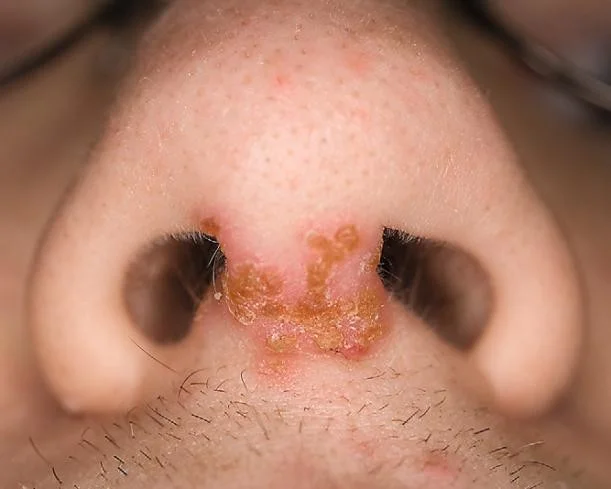
Investigation and treatment
- The diagnosis is usually made on clinical grounds.
- Gram stains or swabs taken for culture
- Mild infection and localised lesions
- Topical antibiotics
- Widespread lesions or more severe infection
- Oral Flucloxacillin